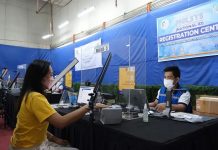
Beliefs, hunting, and agriculture, for example, have all been found to have a major impact on the environment.
This holds true to the Kadayawan sa Davao Festival celebration. Revered as the “King of Festivals,” it stands as a testament to Davao City’s cultural richness and abundant harvests.
Beyond its vibrant festivities, Kadayawan also honors the city’s icons – the majestic Mt. Apo, the mighty Philippine Eagle, the stunning Waling-waling and the tasty Durian.
For the 39th Kadayawan sa Davao Festival, the Philippine Eagle Foundation (PEF) incorporated activities to inspire advocates for the Philippine Eagle conservation through exhibits and tree-planting activities.
The exhibit is entitled The Mt. Apo Indigenous Peoples Coalition for Biodiversity, Environment, and Cultural Integrity (IP-CBEC) by the Indigenous People’s Coalition focused on biodiversity, environment, and cultural integrity; free screening of “To Save Our Eagles”; Weekend Sale; Kadayawan Weekend Gates Promo wherein three people can enter for free for every nine paying guests; Philippine Eagle Nesting Trees Exhibit; and Kadayawan Eagle Adventure, a special Open Classroom Program (OCP).
“We’re hoping to inspire mga environmental advocates to volunteer and donate and help us in the conservation of the Philippine Eagles. It’s a constant process and daghan need na resources,” said Harold Kim Manla, Forest Restoration Marketing Officer of PEF.
The Philippine Eagle Nesting Trees Exhibit aims to inform the public of the importance of the native trees where the Philippine’s national bird nest and also lay their offspring.
“These trees and forests and where they are found hold significance among IP groups in Davao City and they are considered sacred and some are enshrined for sacred rituals,” said Manla.
The exhibit is in line with the foundation’s three million trees campaign that aims to support reforesting the 1,200 hectares of land and multiple nesting sites in Mindanao by planting three million trees.
The PEF has partnered with the IP communities in this endeavor as the workforce in its reforestation efforts.
“The fruit trees alongside the native trees that will be planted will also provide sustainable income for them. If you want to join us in this mission in helping our IP groups in conserving their forest you can visit the center to know more on how you can contribute to this cause,” Manla said.
IP groups are the perfect partner in this mission as more than 70% of the Philippine Eagles are in the ancestral domain and by equipping the IPs as Bantay Bukid the Eagles and their habitats are protected.
Manla said among the foundation’s struggles in protecting the Philippine Eagle is the lack of forest cover for the estimated 392 pairs based on the population model.
In line with this, PEF is looking for 7,000 hectares on average of lush forest cover for an eagle pair to create a nest and produce offspring and this is where reforestation comes in.
“We’re passed na po sa pag protect lang ng forest but we need to create more habitats for these species to survive,” he said.
Manla said the remaining forest cover is all around the Philippines, particularly in Palawan wherein the environment is not suitable for Philippine Eagles but the hotspot for the population of the Philippine Eagle is here in Mindanao as it possesses very thick remaining forest.
The PEF has been conducting reforestation for quite some time in partnership with the IP communities.
“Reforestation is not new for the foundation. But for this certain campaign, the Three Million Trees campaign, which was launched last March, we have multiple tree parents who adopted trees and as of today tinatanim na ang mga trees na na-adopt,” Manla said.
The sad reality remains that even though there is a strong aggressive campaign to conserve and protecting the Philippine Eagles, illegal hunting and shooting of these birds continue.
“It’s a call for everyone’s participation in the eagle conservation. The PEC, we can only do so much but even yung areas na dili ma-hit sa education campaigns we’re hoping that through our digital presence, it could reach those areas na wala pa’y campaigns and hopefully in the future wala nay Philippine Eagle ang mapusilan,” Manla.
The foundation is also calling for government officials and leaders to be more strict with the policies and impose heavy penalties against violators.
Meanwhile, the Philippine Eagle Center (PEC) in Malagos, Baguio District, Davao City is intensifying its conservation education campaign to the youngsters through its Open Classroom Program, which is a fun way of knowing the eagles and learning about life science and conservation of the environment.
Tristan B. Montemor, PEC marketing coordinator, said that the Open Classroom Program is part of the offerings of the PEC during field trips.
“The activity is holistic dili lang siya entertainment, educational and the kids will experience nature. We will encourage them to smell the flowers, touch the soil,” he said.
The program involves games and enjoyable activities wherein students will participate in learning, which includes modules and themes specifically designed to suit the needs and interests of preschool, kindergarten, and elementary students.
It will be heartening to see culture and conservation intertwine, emphasizing the importance of preserving our natural heritage.
The Kadayawan sa Davao is not just a festival of abundance but a reminder of our responsibility towards the environment and to protect the Philippine Eagles and their habitats.
It will be inspiring to see so many people come together to support this cause.






